Ney's defeat at Dennewitz
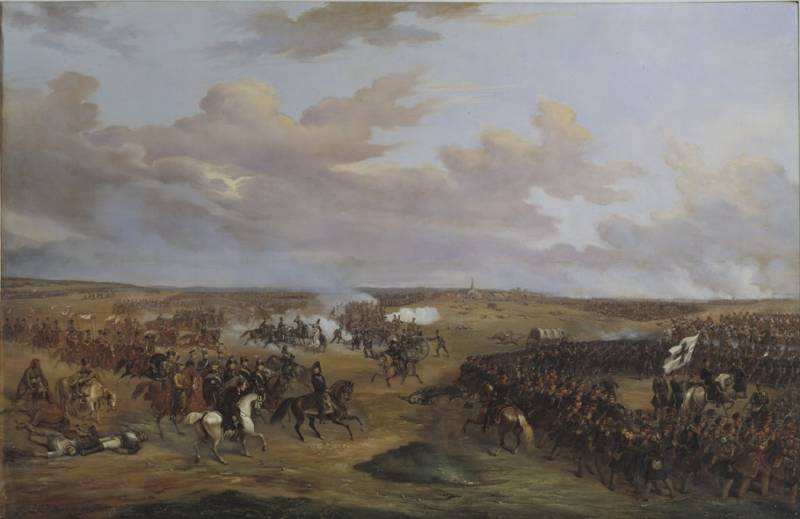
Battle of Dennewitz. Artist Alexander Wetterling
General situation
On August 23, 1813, the Russian-Prussian Northern Army under the command of the Swedish Crown Prince Bernadotte in the battle of Grosberen had already defeated the French army of Marshal Oudinot (How Bülow's Prussians defeated Rainier's Saxons and saved Berlin). The French planned to occupy Berlin to force Prussia into peace negotiations.
The failure of Oudinot's troops angered Napoleon, but he did not abandon his original plan. The Emperor only replaced Oudinot with Marshal Ney, who was highly respected by the soldiers and was distinguished by his composure, determination and courage. Received the nickname "the bravest of the brave" and "tireless".
Bonaparte promised Ney reinforcements and even planned to arrive north with the guard. However, the defeats of the French troops at Katzbech and Kulm (Guards stand and die!) forced the great Frenchman to stay south. Reserves are also left here, replenishing the losses of MacDonald's grouping and the main army.
Ney's group was reinforced only by the Polish division of Dombrovsky, which included 4 battalions and 2 lancers regiments (about 4 thousand people). As a result, Oudinot's forces numbered no more than 70 thousand people. Ney's army included: the 4th Infantry Corps under the command of General Bertrand (French, Italians, Poles, Germans), the 7th Saxon Infantry Corps of General Rainier, the 12th Infantry Corps of Marshal Oudinot (included the Bavarian division) and the 3rd Cavalry corps of General Arrighi. The troops were heterogeneous, foreigners had low motivation to fight for France (except for the Poles). Morale was weakened by the failure at Grosberen.
In the Berlin direction, the enemy's road was blocked by parts of the 3rd and 4th Prussian corps of Bülow and Tauentsin. They numbered about 50 thousand soldiers. They could also be quickly supported by Swedish and Russian cavalry units (about 5 thousand sabers). In the second echelon stood the Russian and Swedish corps. In total, Bernadotte's group numbered more than 150 thousand soldiers, but other forces were scattered throughout Prussia and took part in the siege of enemy fortresses in Germany.
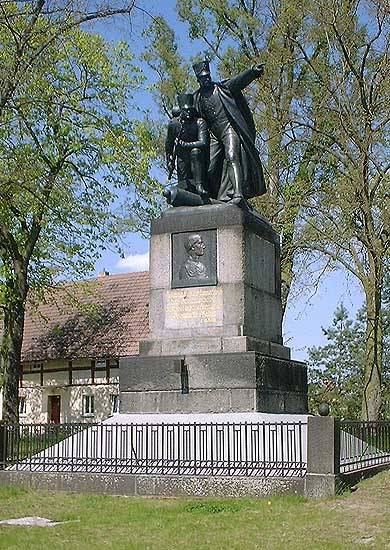
Monument to F. von Bülow in Brandenburg in memory of the battle of Dennewitz
New French offensive
Despite the unfavorable circumstances, the French marshal decided to act immediately. On August 23 (September 4), 1813, he reviewed the troops in the camp near Wittenberg. On August 24 (September 5), he ordered Bertrand's 4th Corps to attack the advanced Prussian detachment at Tsana. After a stubborn battle, the Prussians, having lost several hundred people, retreated to Zalmsdorf.
Ney's troops moved to Berlin along one road: Bertrand's corps was in the forefront, followed by the Saxons Rainier and Oudinot's corps in the rear. The army stretched out over 10 km, and later units were brought into battle as they approached. This weakened the striking power of the French army.
General Dobschutz, who temporarily headed the 4th Prussian Corps (Tauentsin left for the headquarters of the Northern Army), deployed troops in two lines. His corps consisted of about 14 thousand people with 36 guns. The flanks were covered by Cossacks under the command of Ilovaisky. The Prussians were attacked again and retreated to Jüterbog. The Prussians lost up to 3 thousand people during the retreat from Tsana.
On the evening of August 24 (September 5), the Prussian troops deployed in an area of about 25 versts from Yamov to Yuterbog. The Russian and Swedish corps were between Lobessen and Marzane. The offensive of Ney's troops showed the intention of the enemy - to bypass the left flank of the Northern Army and capture Berlin.
Bülow, who was located with his corps closest to the enemy, decided, in the event of a further French offensive against Tauentsin, to strike the enemy in the flank and rear. On the night of August 24–25 (September 5–6), the main forces of the 3rd Prussian Corps were advanced to Kurz-Lipsdorf, finding themselves 5 versts from Bertrand’s corps. In the morning they got even closer to the enemy.
Bernadotte ordered the corps of Bülow and Tauentsin to attack the enemy on September 6. Russian-Swedish troops began to be transferred to the place of the upcoming battle. Part of the Russian troops - Vorontsov's vanguard and Chernyshev's detachment - were sent to the enemy's rear.
The French grouping had up to 10 thousand cavalry, but it was of poor quality. The Cossacks circled around the enemy all the time, interfering with reconnaissance. Therefore, the French command had a poor understanding of the situation around them. The French were unaware of the appearance of Bülow's corps near their left flank. French troops on September 6 were still marching in three columns. The cavalry was in the rearguard.
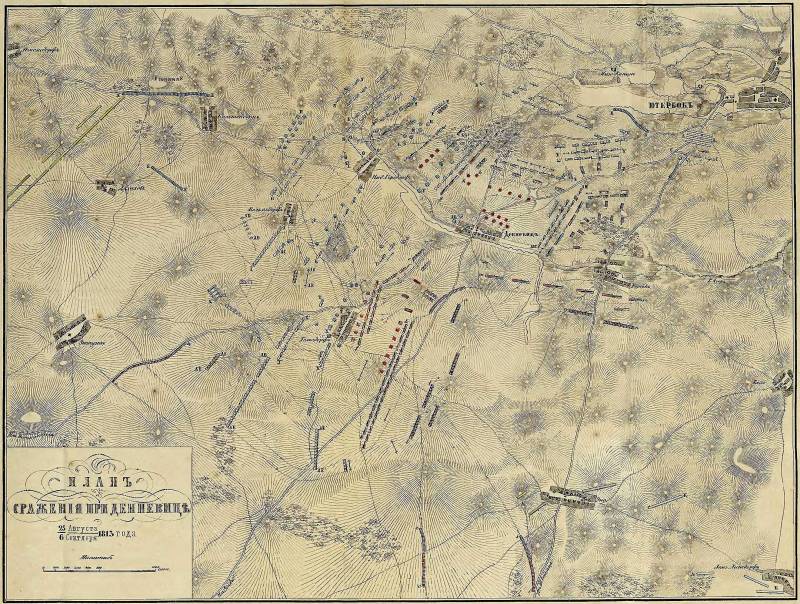
Bits
Tauentsin, intending to unite with Bülow, on the morning of September 6 (August 25), 1813, began the movement of his troops, but the Prussian corps did not have time to leave before the enemy appeared. Tauentsin occupied the heights, placing his troops in two lines. At this time he had about 10 thousand soldiers.
Bertrand's 4th French Corps, having passed Dennewitz, prepared for battle. In the first line was the Italian division of Fontanelli, it was supported by one of the brigades of the Württemberg division of Franchiemon (the second brigade remained in the rear), in the second line - the Lorge cavalry, in reserve - the Moran division. In total, there were about 4 thousand people in the 18th building.
The battle began at about 9 am. At the very beginning of the battle, Ney, who went out to study enemy positions, was almost captured by the Cossacks. For a long time, the battle was limited to a shootout. Only at about 13 o'clock the Prussian troops retreated beyond the ravine, and the French were going to pursue them. In the meantime, Bulow's corps came out to the left flank of Bertrand. Bülow's three brigades and cavalry took up a flank position in the morning near the village of Nieder-Görsdorf, to the left of the French corps. Bulow sent the 4th brigade of Tyumen (8 thousand soldiers) to help Tauentsin. The rest of the brigades remained in reserve.
Tauenzin, hearing the artillery skirmish on his right flank and noticing that the French had halted the attack, counterattacked with the help of the cavalry. Two squadrons of the 3rd Pomeranian Regiment scattered three enemy battalions and took many prisoners. The 4th squadron of the Brandenburg hussars, as well as the 1st and 7th Kurmark regiments, broke through the first line of the French corps, dispersed two battalions in the second line, and overturned the cavalry regiment. Two Polish uhlan regiments tried to counterattack, but were defeated by the 4th Kurmark Landwehr Regiment and three squadrons of the 2nd West Prussian Regiment. The Tauenzin corps launched a counteroffensive with all its might and forced the enemy to retreat.
At the same time, Tyumen's brigade attacked Durutte's division. The Prussians' first attack was repulsed by heavy artillery fire and a bayonet charge. Bülow reinforced Tyumen with part of the Hesse-Homburg brigade with the Russian artillery company of Colonel Dietrichs (it was then reinforced with 6 more guns). With artillery support, the Prussians attacked a second time and threw the French from the heights. Durutte's division retreated to Dennewitz. General Tyumen attacked the village with 16 battalions of the 4th and 3rd brigades.
At this time, the Saxon corps entered the battle. The Saxons launched an offensive against Kraft's 6th Brigade. In the first line was the 1st Saxon division of Lecoq, in the second - the 2nd Saxon division. The Saxons began to push back the Prussians, and Bülow sent the remaining battalions of the 3rd Hesse-Homburg brigade to help Kraft. A fierce battle between the Saxons and Prussians took place for the village of Gelsdorf. The Prussians were knocked out of the village three times, but they counterattacked and regained Gelsdorf.
By 16 o'clock the situation on the right wing of the Prussian troops was favorable. The Prussians gained the upper hand, the enemy retreated. But Bülow had already brought all his forces into the battle. And three divisions of the 12th Corps of Marshal Oudinot approached the French army with the main forces of the cavalry. Against 15 Prussian battalions, there were about 50 enemy battalions on the right flank.
The French opened concentrated fire from several batteries on Gelsdorf. Guillemino's division went on the attack. The Prussians fought bravely. They overturned two enemy battalions and forced a third to retreat. Many prisoners were taken. However, the balance of power was in favor of the enemy, and it soon had an effect. The French captured Gelsdorf with a second attack.
At this critical moment, the 5th Borstel Brigade (8 battalions) appeared. Bülow ordered the recapture of Gelsdorf. The Prussians went on the attack and captured Gelsdorf. The French responded with a fresh blow from Guillemino's division, supported by the forces of the other two divisions. The Prussians were again driven back from Gelsdorf.
Borstel's artillery could not withstand the fire of 50 enemy guns. The French cavalry tried to complete their success, but were repulsed. Borstel's brigade attacked Gelsdorf a second time. This attack could have been the last effort of the brave Prussian troops on this flank. They had no more fresh forces.
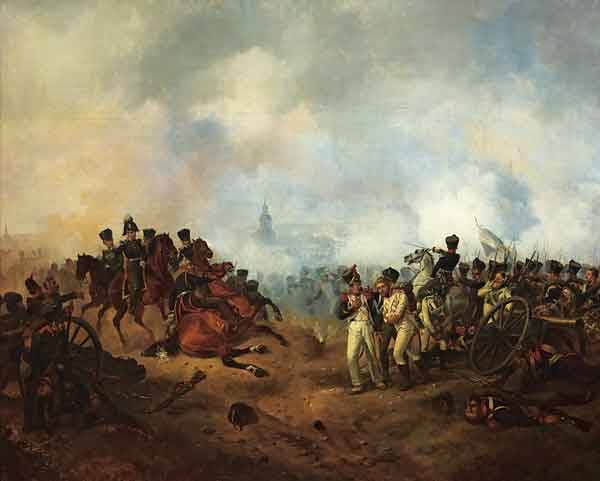
L. Elsholts. Battle of Dennewitz in 1813.
Ney's mistake
Ney, satisfied with the success on the left flank, decided to remove Oudinot's 12th corps from him and send him to support Bertrand's 4th corps. On the right flank, the situation for the French troops was really unfortunate. The Prussians captured Dennewitz. The squadrons of the East Prussian Regiment passed Rohrbeck and overturned 8 enemy squadrons. The troops of the right wing of the French army retreated in all directions.
Renier, seeing a clear danger in the departure of the 12th corps, offered to leave him at least one division from the corps of Oudinot. Oudinot did not want to separate the troops and moved all the forces of the 12th corps to Rohrbeck. Only a few Bavarian battalions were left to help the Saxon corps.
Corps Oudinot moved to the right wing for more than an hour. When he appeared there, the situation could no longer be corrected. Bertrand's corps and Dyurutte's division retreated in disorder and involved Oudinot's troops in disorder. The Prussian cavalry pursued the enemy.
At this time, Bülow ordered Borstel's brigade to attack Helsdorf again. She was supported by Oppen's reserve cavalry. At the same time, reinforcements arrived - the Izyum hussars, the dragoons of the Riga and Finnish regiments under the command of Palen, 5 Ilovaisky Cossack regiments and two battalions of rangers, which joined the Borstel brigade. The Russian-Prussian cavalry overthrew the enemy's cavalry and captured several guns.
Following this, artillery appeared - a Swedish battery and Russian companies. Artillery fire caused great damage to the enemy. The Saxons fought bravely, but were driven out of Gelsdorf and began to retreat.
By 18 p.m. the battle was over. The French army was defeated.
Cavalry and Cossacks pursued the enemy. Ney's troops retreated to Torgau on the Elbe in complete disarray.
At the Aisne, part of the French troops tried to gain a foothold, but were overthrown by the Raisin and Pomeranian hussars. The hussars captured more than 1 thousand people and captured 11 guns.
At Dame, the French were attacked by General Wobeser. After a stubborn battle, the entire 23rd line regiment of Bertrand's 4th Corps laid down weapon. About 2,5 thousand people were captured. Prussian guerrilla units at Holzdorf captured more than 300 people and 8 guns. At Herzberg, the detachments of Count Orurk and Lieutenant Colonel Lottum defeated the Saxons, taking the 800 people into captivity.
Results
The Northern Army repelled a second attempt by the French army to capture Berlin.
The French troops suffered a serious defeat and suffered heavy losses. Ney's troops in the battle of Dennewitz and during the retreat to Torgau lost 16–18 thousand people (according to other estimates, 22–25 thousand people, including deserters). There were especially many prisoners: 10–13 thousand people.
The 12th Corps had to be disbanded, distributing the remaining troops among other formations. His commander Oudinot became the head of the Young Guard.
The Allies captured 60 guns and 4 banners. Prussian troops lost 9–10 thousand people in a stubborn battle. Bülow's corps - more than 6 thousand people, Tauentsin's corps - over 3 thousand people. Russian troops lost 25 people in this battle.
The Battle of Dennewitz intensified the rift between the French and Saxons that had existed previously. Marshal Ney blamed the defeat on the Saxons, whose flight led, according to him, to the withdrawal of Oudinot's 12th Corps. Most of the Saxons, who were captured at Dennewitz, went over to the side of the Allies.
The Battle of Dennewitz was the only major battle of September 1813, after which the parties began to gather strength for the decisive battle.
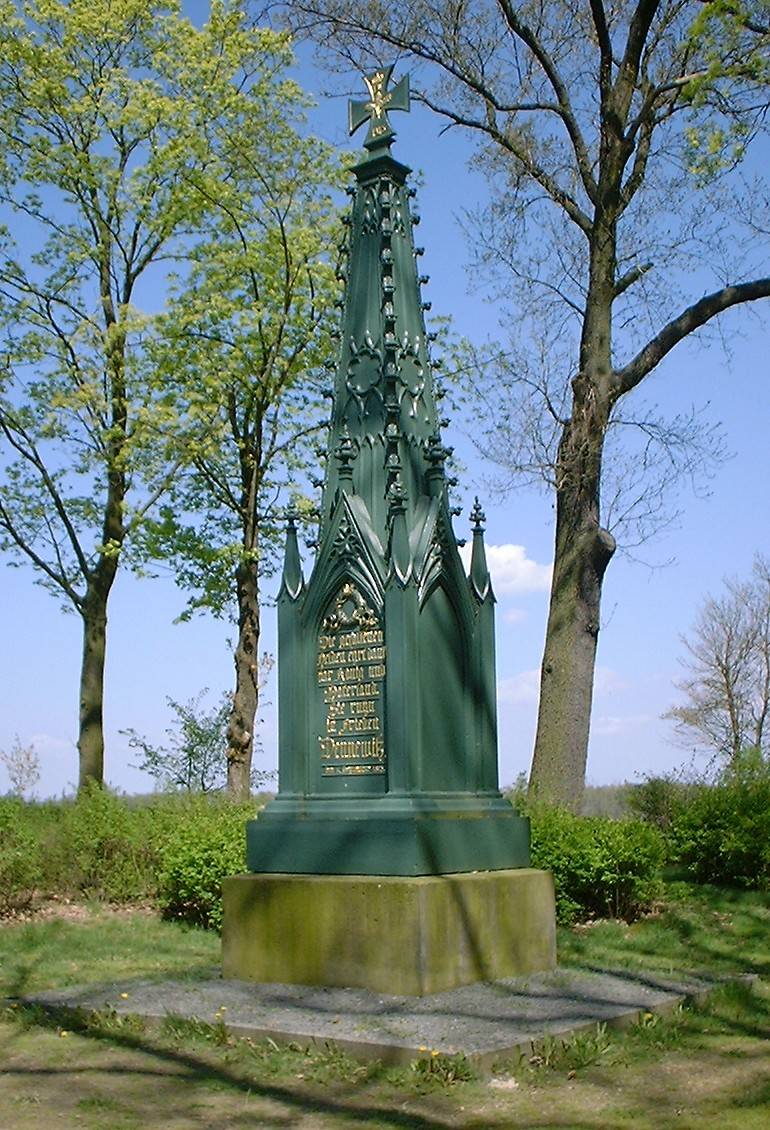
Memorial at the site of the battle of Dennewitz, erected in 1817 in the village of Niedergörsdorf
Information